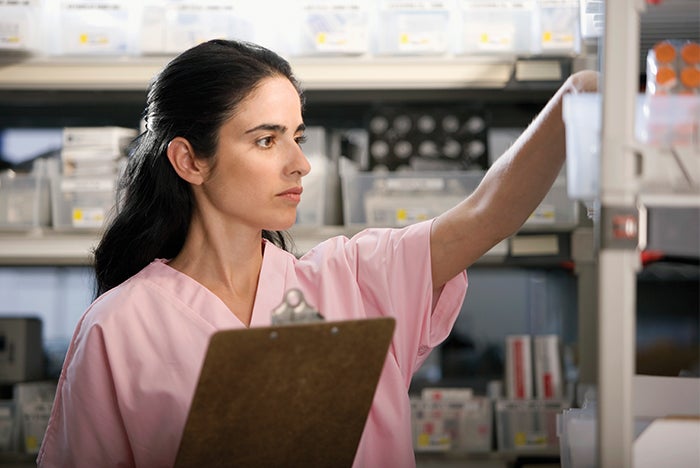Ensuring a consistent, standardized process

Supply room and materials management disciplines should be engaged to ensure that any new disposables and accessories are stocked and ordered.
Image from Getty Images
Consistently executing a comprehensive and standardized clinical equipment acquisition process is essential to effectively managing the limited financial resources within hospitals and health systems.
In May 2018, the Association for the Advancement of Medical Instrumentation (AAMI) convened a multidisciplinary group of professionals for a two-day workshop with the goal of finding ways to solve this challenge. An important outcome of the meeting was achieving consensus that the acquisition process should include significant pre- and post-procurement activities. In addition, the outcome of the workshop — as well as subsequent research — will result in the release of an acquisition guide to be published by AAMI this month.
For instance, the group described the pitfalls of not having the correct mechanical, electrical, plumbing or information technology infrastructures to support a piece of equipment that had already been purchased. When an oversight such as this is scaled to the magnitude of a construction project or a bulk order of equipment, the cost to move electrical outlets or add circuits can greatly impose scope and financial creep into a project.
From a patient-safety perspective, the group also looked at the clinical risks of not having standardized equipment and equipment purchases that take into account the clinical workflow of the institution. Clinicians may be unfamiliar with how to read data from a one-off device or may operate the device incorrectly, which can lead to poor patient outcomes and major repercussions for the health care organization, including damage to its reputation.
Finally, the group agreed that equipment acquisition extends far beyond a health care organization’s decision of what to buy. After equipment is purchased, it needs to be maintained throughout its life cycle. This notion alone makes it even more essential to have the correct disciplines at the table from the outset. Consideration needs to be given to the resources, specialized training, consumables, parts and test equipment needed to support and clean the equipment.





